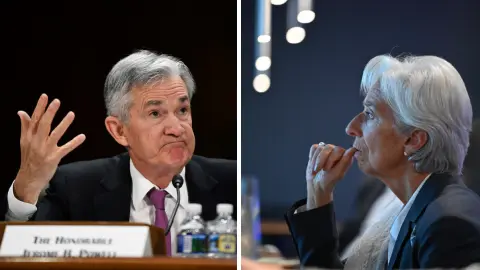FX, Rates and Commodities at a glance
As we head into a year set to be characterised by lower market rates, a weaker US dollar, and the potential for ongoing geopolitical tensions to persist, our team outlines their top calls for markets over the coming months
FX
The mood in the FX market can best be described as mixed. The dollar is recovering some of its late 2023 losses as the scale of the expected Federal Reserve's easing cycle is pared back. The consensus view, however, remains that 2024 will be the year of a weaker dollar. As always, timing is everything.
Our preference is that the next major leg of the dollar decline probably comes through late in the second quarter as the Fed launches into its easing cycle. Rate spreads should eventually prove positive for EUR/USD – especially as European Central Bank (ECB) easing expectations seem far too aggressive – but again, it should be in the second half that the currency pair embarks on its rally to 1.15. Until then, we expect choppy conditions for the major currencies and also expect investors to continue their search for yield. Perhaps it is no surprise that some of the strongest currencies so far this year have been the Hungarian forint, the Mexican peso and the Indian rupee – all of which are the highest yielding currencies in their respective trading blocs.
Chris Turner
Rates
We continue to expect market rates to get lower in 2024, but let's take this one step at a time. Evidence is mounting for a step higher in market rates first. The eurozone economy remains one characterised by 3% inflation, and US labour market angst remains low.
In a way, rate markets have jumped the gun. Markets are just not yet seeing enough from the macro data to validate the dramatic fall in market rates seen at the tail end of 2023. The 10yr Treasury yield is now just around 4%, while the 10yr term premium is back in negative territory at around -20bp. Similar holds true for the 10yr Bund yield. A negative term premium means that the level of rates is being dominated by the future path of short-term rates. There is no compensation for taking on duration. This isn't to say that 10yr rates cannot fall – they can, of course. They can overshoot to the downside, and they will. For now, a drift higher in rates is right before we get to a proper rate cutting environment.
Padhraic Garvey
Commodities
Despite tensions in the Middle East and additional voluntary OPEC+ cuts, ICE Brent settled a little more than 10% lower in 2023 – its first annual decline since 2020. The oil balance is looking increasingly more comfortable for 2024 with a small surplus over the first half of the year, before returning to deficit over the second half. Non-OPEC+ supply growth has been stronger than expected, which has helped loosen the market. However, if current additional voluntary cuts from OPEC+ are rolled over into the next quarter, this will reduce the scale of surplus and provide some support to prices. Furthermore, tensions in the Middle East have been growing recently. While this is currently not leading to any supply disruptions, there are clear risks that escalation could potentially start to have a direct impact on the oil supply.
The European gas market is also looking increasingly comfortable, with gas storage more than 86% full at the end of December, above the 83% seen at the same stage last year. Gas demand remains under pressure, which has ensured comfortable storage. In the absence of any supply shocks or demand spikes, our balance sheet suggests that Europe will now likely exit the 2023/24 heating season with storage more than 50% full, which would mean that significant upside in gas prices is unlikely.
Warren Patterson
Download
Download article
11 January 2024
ING Monthly: Daring to question the markets’ rate expectations This bundle contains {bundle_entries}{/bundle_entries} articlesThis publication has been prepared by ING solely for information purposes irrespective of a particular user's means, financial situation or investment objectives. The information does not constitute investment recommendation, and nor is it investment, legal or tax advice or an offer or solicitation to purchase or sell any financial instrument. Read more





